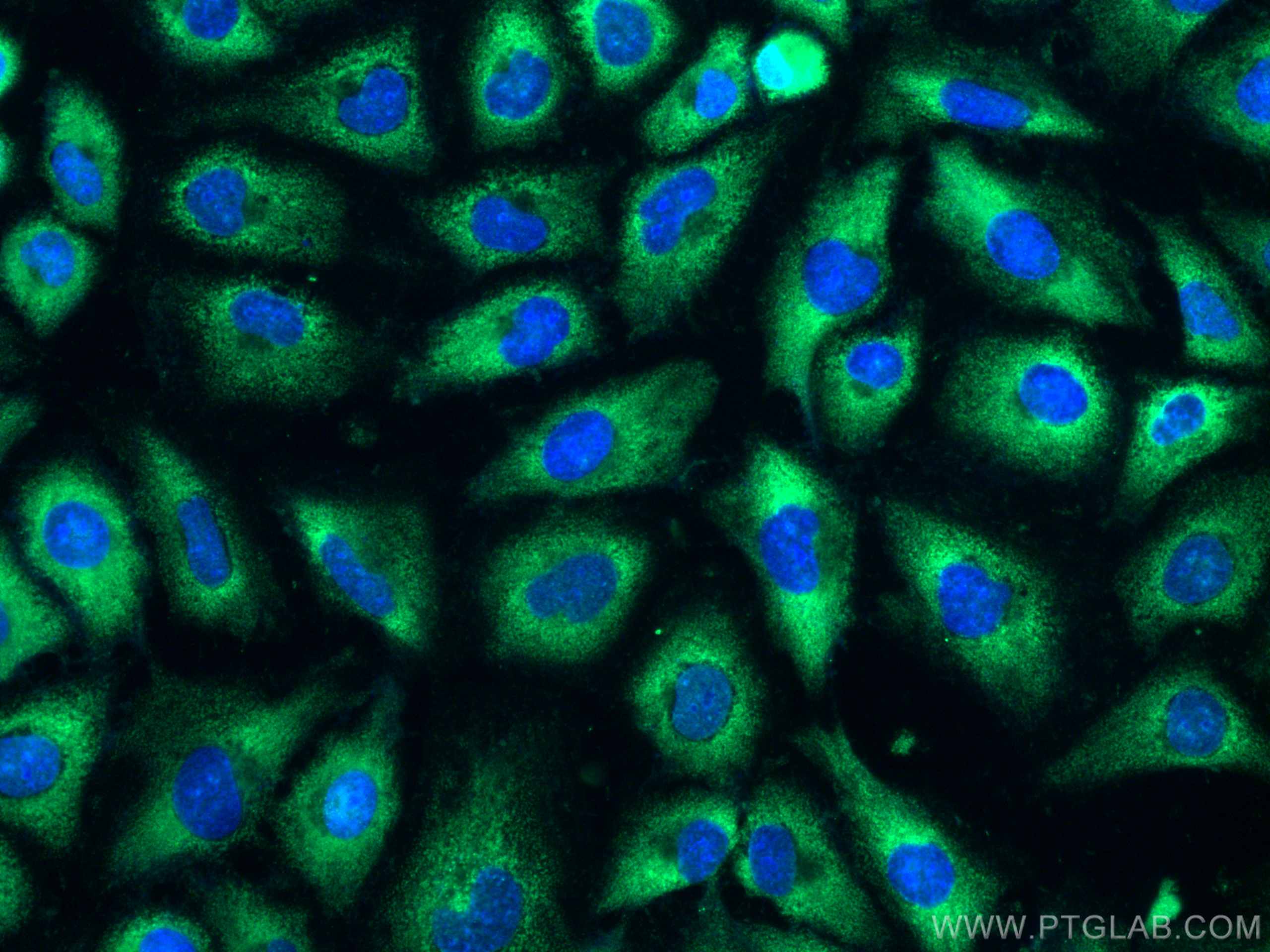Tested Applications
| Positive IF/ICC detected in | HeLa cells |
Recommended dilution
| Application | Dilution |
|---|---|
| Immunofluorescence (IF)/ICC | IF/ICC : 1:50-1:500 |
| It is recommended that this reagent should be titrated in each testing system to obtain optimal results. | |
| Sample-dependent, Check data in validation data gallery. | |
Product Information
CL488-67542 targets RHOC in IF/ICC applications and shows reactivity with Human, mouse, rat samples.
| Tested Reactivity | Human, mouse, rat |
| Host / Isotype | Mouse / IgG1 |
| Class | Monoclonal |
| Type | Antibody |
| Immunogen |
CatNo: Ag14633 Product name: Recombinant human RHOC protein Source: e coli.-derived, PET28a Tag: 6*His Domain: 1-193 aa of BC007245 Sequence: MAAIRKKLVIVGDGACGKTCLLIVFSKDQFPEVYVPTVFENYIADIEVDGKQVELALWDTAGQEDYDRLRPLSYPDTDVILMCFSIDSPDSLENIPEKWTPEVKHFCPNVPIILVGNKKDLRQDEHTRRELAKMKQEPVRSEEGRDMANRISAFGYLECSAKTKEGVREVFEMATRAGLQVRKNKRRRGCPIL Predict reactive species |
| Full Name | ras homolog gene family, member C |
| Calculated Molecular Weight | 22 kDa |
| GenBank Accession Number | BC007245 |
| Gene Symbol | RHOC |
| Gene ID (NCBI) | 389 |
| RRID | AB_2919497 |
| Conjugate | CoraLite® Plus 488 Fluorescent Dye |
| Excitation/Emission Maxima Wavelengths | 493 nm / 522 nm |
| Form | Liquid |
| Purification Method | Protein G purification |
| UNIPROT ID | P08134 |
| Storage Buffer | PBS with 50% glycerol, 0.05% Proclin300, 0.5% BSA, pH 7.3. |
| Storage Conditions | Store at -20°C. Avoid exposure to light. Stable for one year after shipment. Aliquoting is unnecessary for -20oC storage. |
Background Information
Ras homolog family member C (RHOC) encodes a Rho-related GTP-binding protein, which belongs to small GTPase superfamily and also Rho family. RHOC. Regulates a signal transduction pathway linking plasma membrane receptors to the assembly of focal adhesions and actin stress fibers. Expression of RHOC contributes to metastatic phenotype of melanoma cells and is associated with multiple cancers including gastric carcinomas, ovarian carcinomas and breast cancer as well.
Protocols
| Product Specific Protocols | |
|---|---|
| IF protocol for CL Plus 488 RHOC antibody CL488-67542 | Download protocol |
| Standard Protocols | |
|---|---|
| Click here to view our Standard Protocols |




